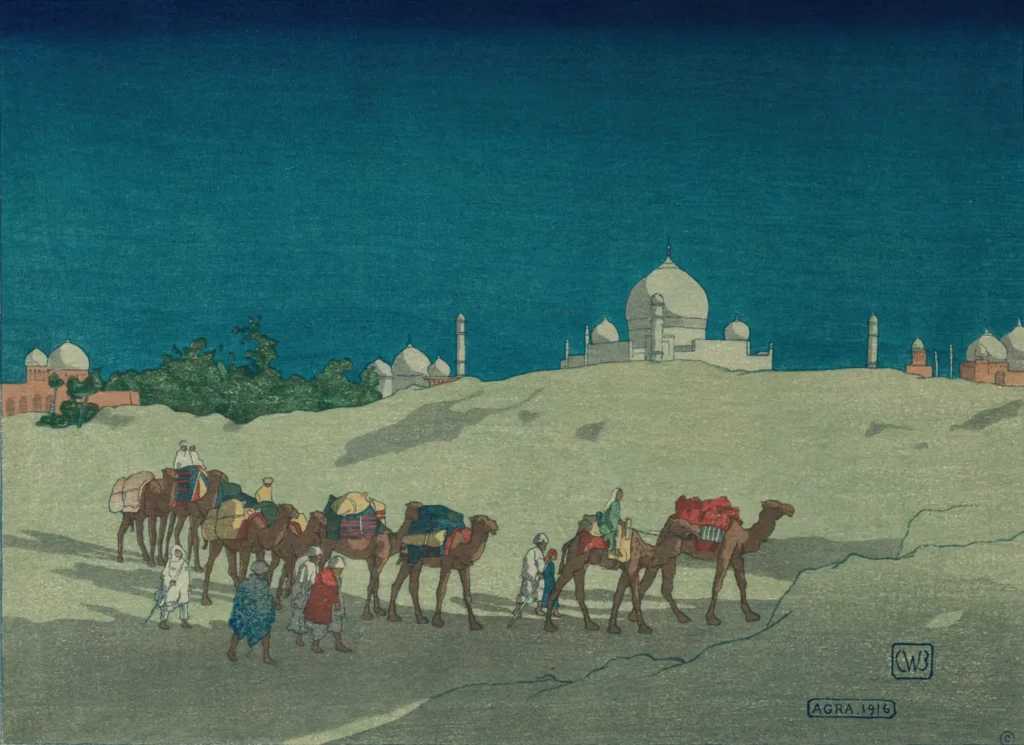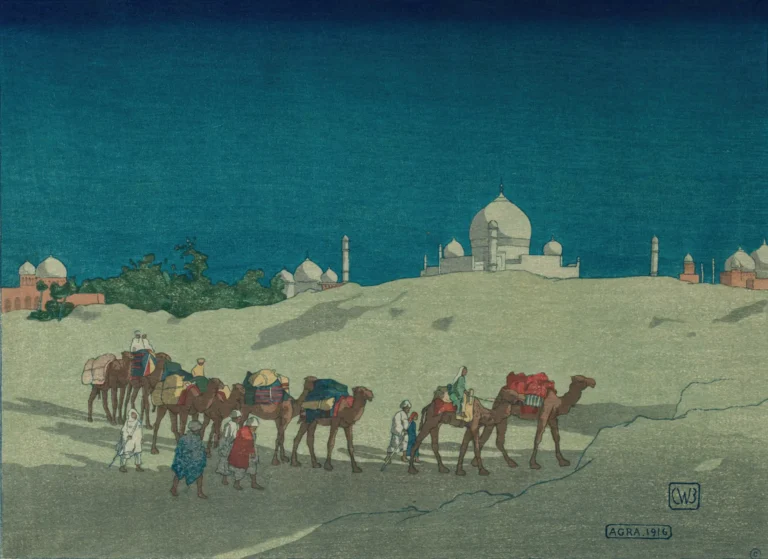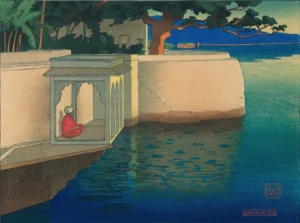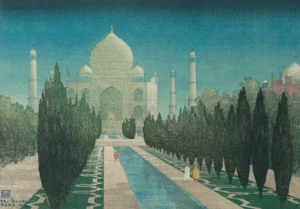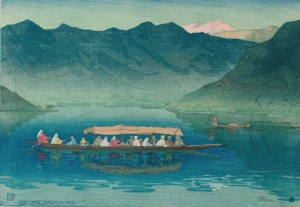Agra(1916)
Charles William Bartlett's Agra, created in 1916, is a stunning color woodcut print that exemplifies the ukiyo-e technique. The artwork captures a moonlit scene of camels passing by the majestic Taj Mahal in Agra, India. Bartlett's adaptation of Japanese printmaking methods to portray his experiences from Asia, particularly India, emphasizes a successful blending of Western and Eastern artistry, making this piece both culturally significant and a highlight of his oeuvre.
Year 1916
About the Artwork
Agra reflects Charles William Bartlett's fascination with art that transcends cultural borders. After being captivated by the landscapes and architecture during his travels in Asia, particularly India, Bartlett collaborated with renowned Japanese publisher Shozaburo Watanabe to create this series of woodblock prints. Agra not only showcases the iconic Taj Mahal, bathed in moonlight, but also stands as a testament to Bartlett's technical mastery and his ability to weave narratives from his journeys. The print’s delicate use of color and traditional ukiyo-e techniques left a lasting impact on viewers, bridging the gap between Eastern and Western artistic traditions.
Did You Know
Bartlett’s Agra was inspired by his extensive travels to Asia, where he sought to portray the beauty of the landscapes and architecture he encountered. His experiences in India significantly shaped the subject matter of his work.
Agra was part of a collaborative effort with Shozaburo Watanabe, a notable Japanese print publisher, marking a significant cross-cultural exchange in the art world and helping to introduce Japanese printmaking techniques to Western audiences.
The Cleveland Museum of Art houses a version of Agra as part of the James Parmelee bequest, contributing to the artwork’s historical significance and ongoing appreciation in both American and global art collections.




